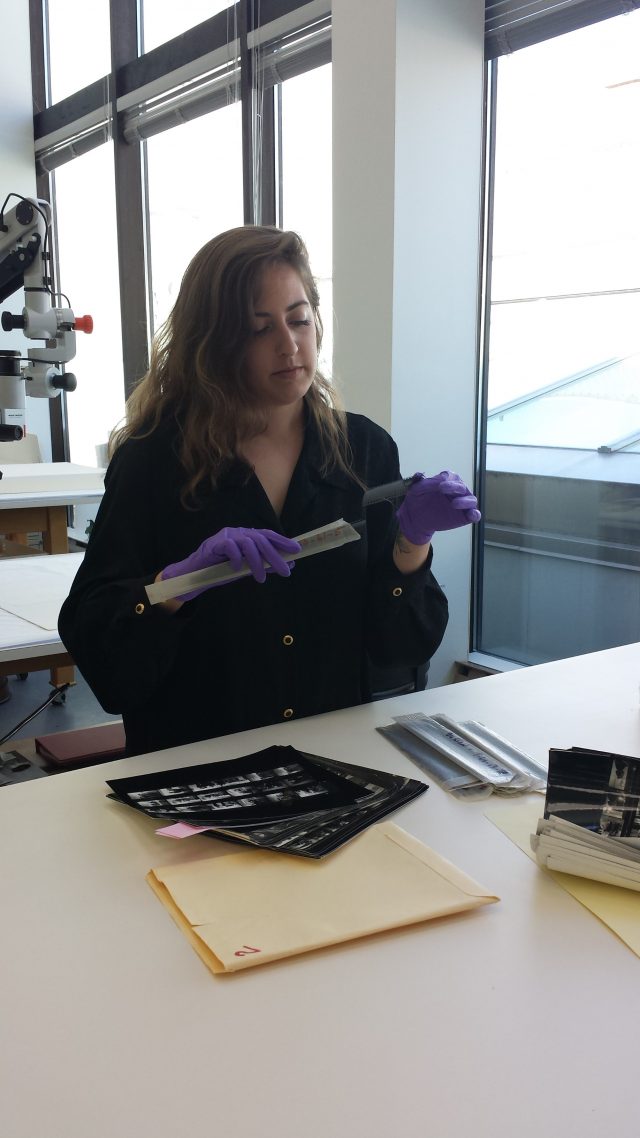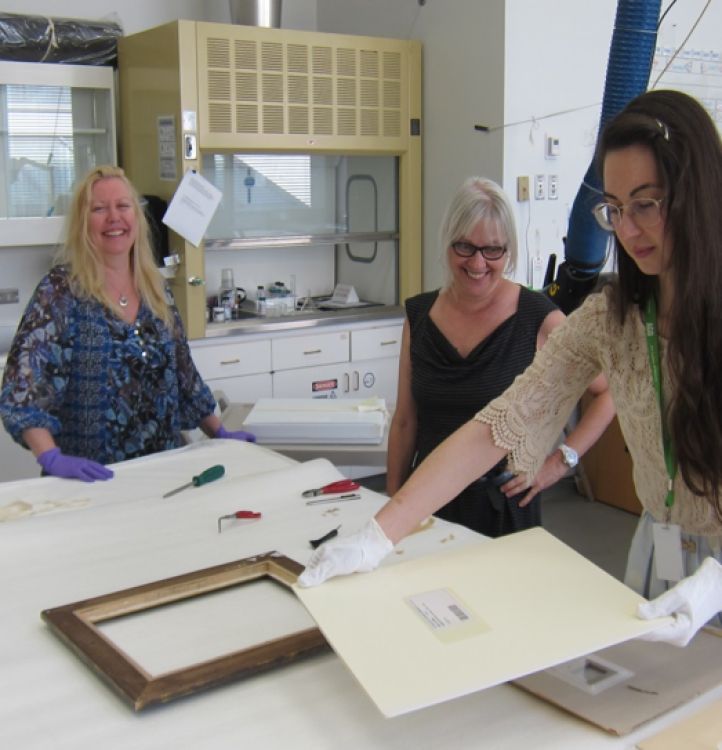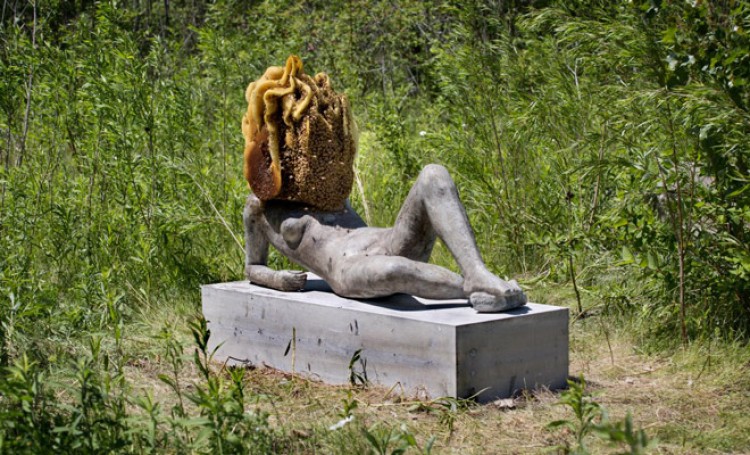Under the Light: Preserving Tess Boudreau’s negatives and contact sheets
Curatorial intern Cat Lachowskyj shares her recent findings made during her work in the AGO Photography Collection. A graduate student at Ryerson University in the Film and Photographic Preservation and Collections Management program (FPPCM), Cat is currently writing her thesis on colonial photographs taken during the Younghusband Mission in Tibet (1903–1904).

What project are you currently working on at the AGO?
I’m working on preserving and organizing a collection of Tess Boudreau’s negatives and contact sheets that comprise one of the AGO Library’s Special Collections. We have a number of her photographs in the permanent Photography Collection, so it’s interesting to also have the negatives and contact sheets that reveal her working process.
Who was Tess Boudreau?
Boudreau has an interesting history, having lived in Nova Scotia, Montreal, and Paris, where she worked for Henri Cartier-Bresson as a caption writer for his photographs. As a skilled darkroom technician, she was able to find work easily in many major cities in Canada and Europe. In 1950 she met her husband, Kryn Taconis, who also had affiliations with Cartier-Bresson through Magnum Photo. The couple eventually left Paris for Amsterdam, and then moved to Toronto where Boudreau worked as a photographer in the arts scene during the 1960s, photographing artists, studios, and events. She passed away in 2007 in Guelph, which is when this collection was gifted to the library.
 Catherine Lachowskyj, Curatorial Intern, Photography
Catherine Lachowskyj, Curatorial Intern, Photography
Can you explain the Tess Boudreau project in greater detail?
Because the materials had been stored for some time at the house of one of Boudreau’s friends, unstable temperature and humidity conditions resulted in their curling and warping. I have been working closely with Katy Whitman, our Photography Conservator here at the AGO, to properly house the negatives and flatten the contact prints. I’m also pursuing research on Boudreau’s life and work so that this can be incorporated into a finding aid for the collection. This finding aid will help create links to Boudreau’s prints in the permanent collection.
 Tess Boudreau, contact sheet, ca. 1960-1969, gelatin silver print with applied colour, 8.5x11"
Tess Boudreau, contact sheet, ca. 1960-1969, gelatin silver print with applied colour, 8.5x11"
Why might objects like these be useful for scholarly research?
Objects that provide us with more information on a maker’s process and greater context are often the most useful research tools. Negatives and contact sheets can reveal events that were not necessarily deemed important or worthy of a final print at the time of their creation. For example, many of the negatives show work that isn’t found in our permanent collection. By looking at these objects in particular, we can identify attendees of certain gallery events in Toronto in the 1960s, revealing networks and a history of Toronto’s art world that might not be common historical knowledge. The collection can also help us better understand Boudreau’s own artistic practice. Yellow markings on some contact sheets show Boudreau’s process of selecting a particular image to be made into a final print, and further markings indicate her notation method for editing prints in the darkroom.
Signature Partner of the AGO’s Conservation Program
Signature Partner of the AGO’s Conservation Program





